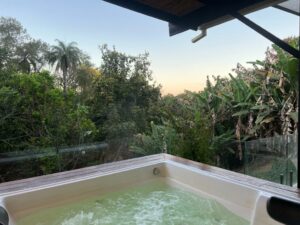Traveling can be one of the most rewarding experiences of your life, but it can also be quite expensive! That’s why it’s important to make a budget for your trip that you can actually stick to. In this post, I’ll walk you through the steps to create a realistic budget, categorize expenses, and make sure you have a buffer to cover unexpected costs.
I will elaborate on each of these steps below, but my rough preferred process for building a budget I can stick to goes like this:
- Determine your likely total available $$$
- Roughly map out your trip
- Break down your expenses
- Prioritize your activities
- Calculate your max monthly/weekly/daily spend.
- Rationalize funds Vs expenses
- Track your spending.
I want to give you some really clear actionable steps for each of these sections, so, without further ado… let’s dig in!
1. Determine your likely total available $$$
First things first, you need to know how much money you have available for your trip. Take a realistic look at your finances and determine how much you can comfortably spend on your trip. Be honest with yourself about what you can afford, and don’t forget to include any potential income you may have during your travels, such as freelance work, work you think you can get whilst traveling, or any passive income you might have.
2. Roughly map out your trip
Decide where you think you’ll be going and staying, how you’ll be traveling and living, and what you’ll be doing or visiting. If you’re not sure how to do this, check out my last 2 posts in these series to help you form a clearer vision for your trip and then use some awesome tricks and tools to plan it out.
3. Break down your expenses.
When budgeting at home I like to use the two major categories of “essential” and “non-essential” and sub-categorize everything under these umbrellas… Budgeting for a trip is a little different. There’s a lot more variables when you travel, so you need a few extra ‘buckets’.
For travel, I use the following categories:
- Daily dues: These are all your basic expenses, accommodation, transport, food, insurance, etc.
- Sightseeing: These are all the specific places you want go, or experiences you want to have, that have obvious and calculable fixed costs you can find out online before you go. I’m talking tours, museums, climbing Machu Pichu, visiting the Sagrada Familia or hot air ballooning in Cappadoccia.
- Frivolous Fun: These are the fun things that are harder to predict your spend on and could include things like; eating out at fancy restaurants, clubbing in Berlin, visiting head shops in Amsterdam, buying a flight on a whim to meet a friend in New York for the weekend, etc, etc. While these things can certainly enhance your trip, they’re not absolutely necessary and the costs can get away from you if you don’t keep an eye on them!
- Shopping: I’m not a big fan of shopping as I prefer to spend my money on experiences, but I’ll occasionally buy some clothes or souvenirs when I’m traveling. However, I do think it is important to expect that there are going to be some things that will catch your eye and you’ll want to buy. Being prepared for that by putting some money aside specifically for it stops you feeling guilty about splurging on a Dior dress in Venice!
- Bigtime Blowouts: Planning to head to Vegas? Going to Tommorowland for the first time? Going to stay at a swanky resort in the Maldives? Once you’re there, you’re probably gonna want to go a bit crazy and splurge like there’s no tomorrow… I know I do! This is the section where you identify the parts of your trip where you think you might go a bit overboard. Budget big, if you under spend, that’s not a problem, but overspending could put you in a tricky spot and affect later parts of your trip, or mean that you can’t do them at all, or put you into significant debt!
- Buffer: Whilst you should build some buffer into your less certain costs categories (Frivolous Fun and Bigtime Blowouts… and maybe shopping if your into that), I think it’s also important to have a significant buffer for your overall trip in case of emergencies, or anything else that might come up unexpectedly. If you’re someone who’s flush with savings, this may not be a necessary category, but I still think it’s good to have a mindful amount of what you can go over by and not have a gaping hole your pocket when you get home. If you’re really stressed about it, I suggest having your money in two buckets, your main buffer and you backup buffer and only draw on the backup in real emergencies.
- Home: Got rent, bills, rates, or whatever to pay at home still while your out living it up? Yeah, it sucks but there’s not much you can do about it. Make sure it’s accounted for in the budget or you’ll come home poorer than you expect.
So, now you’ve got my proven way to build a budget that actually accounts for all the likelihoods and variables of your trip, you should get to filling it in. You can make your own version, or use my Out There Badass Budget template here. Just click “file” and “Make a Copy” to get your very own version for your next trip.
4. Prioritize and Proportion your Activities
Now that you have your expenses categorized, it’s time to prioritize your spending. Start with the daily dues and Home categories as they are literally things that you CAN’T avoid paying for (in most circumstances), and allocate the majority of your budget to these items.
Next, consider what non-essential expenses are most important to you, these will likely come from the Sightseeing and Bigtime Blowouts categories as these are often the big things you came to a place for!
With the Buffer Category, I simply like to assign 10% of my total travel budget to it.
Lastly, consider the things that you will likely spend money on in the Frivolous Fun and shopping categories as these are most likely the things that you can probably do without in a pinch.
Your priorities will help you to know how much funds you should allocate to the various sections of your budget, however these can still balloon out however you like depending on your budget. To give you an idea I’ve provided a (very rough) table of proportional expenditure for each category depending on your style of travel.
5. Calculate your max (and min if you want) monthly/weekly/daily spend.
Calculating your min & max spend is not totally necessary, but I find it a super helpful exercise as it gives me a reference point for what I should be trying to aim for each day. I have provided options for Min, moderate, total, and max spend in my badass budget template. I hope you find it useful!
6. Rationalize Funds Vs expenses
By rationalize, I DON’T mean justify why you’re spending $5K on a Versace bag… I couldn’t care less. I simply mean that you take the time to confirm that your expenses don’t total up to more than your expected income.
In this situation, it’s important to account for all variables, so if some of your income is not certain, I would either estimate it on the low side, or not include it at all and then work with the lesser budget… better to low-ball it and end up flush in cash than to find yourself without $$$ all alone in Marrakesh, with no accommodation or food to your name (this actually happened to me, although for quite a different reason… more on that another time). Again, using my badass budget template will make this process totally automatic, just fill in your income and predicted expenses and it’ll do it all for you!
7. Track your spending.
Once you have your budget set, it’s helpful to track your spending. There are plenty of apps available that can help you keep track of your expenses, such as Trail Wallet, Mint, and Spendee. Set a daily spending limit and be diligent about tracking your expenses throughout your trip. This will help you stay on track and avoid overspending. International Banking apps like Wise and AirWallex are great and often have good tracking features too. I’ll be doing another post shortly on how to not pay bank fees overseas… so keep your eyes open and be sure to subscribe to my channels and newsletter!
In conclusion…
Creating a budget for your trip may not be the most exciting part of travel planning, but it’s one of the most important. By following these steps and being diligent about tracking your spending, you can ensure that you stay within your budget and make the most of your trip without breaking the bank.


